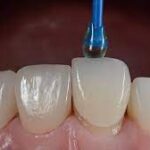If you’re considering cosmetic dental work, you may ask, what are the alternatives to dental bonding? While Dental Bonding Cementing is an effective and affordable option for repairing chipped, discolored, or slightly misaligned teeth, it may not always be the most durable or aesthetically superior choice. Fortunately, several other cosmetic and restorative dental treatments are available depending on your needs, budget, and long-term goals. Understanding the various alternatives to dental bonding can help you make the best decision for enhancing your smile and maintaining oral health.
Porcelain Veneers: A Long-Lasting Cosmetic Upgrade
Porcelain veneers are among the most popular alternatives to dental bonding, especially for patients looking for a more durable and stain-resistant option. Veneers are thin shells of ceramic material custom-made to fit over the front surface of your teeth, providing a flawless and uniform appearance.
Why veneers are a strong alternative:
-
Resistant to stains from coffee, tea, and smoking
-
Last 10–15 years or more with proper care
-
Custom-designed for shape, size, and color
-
Provide a natural, luminous look
-
Stronger and more durable than composite bonding
Although more expensive than bonding, porcelain veneers are ideal for those seeking a long-term solution with excellent aesthetic results.
Dental Crowns: For Structural and Cosmetic Repair
If your tooth is severely damaged, worn, or decayed, a dental crown may be a better choice than bonding. Crowns cover the entire tooth, restoring its strength, function, and appearance. They’re commonly made from porcelain, ceramic, metal, or a combination of materials.
Benefits of choosing crowns:
-
Protect and strengthen weak or broken teeth
-
Ideal for large cavities or after root canals
-
Can match natural tooth color with porcelain crowns
-
More coverage and durability compared to bonding
-
Suitable for both front and back teeth
Dental crowns are especially beneficial when cosmetic improvement is combined with a need for structural restoration.
Teeth Whitening: A Non-Invasive Option for Stains
If your primary concern is tooth discoloration, professional teeth whitening may be a simple and non-invasive alternative to bonding. Bonding is often used to cover stains that whitening can’t fix, but many extrinsic stains respond well to bleaching treatments.
Advantages of teeth whitening:
-
Fast and painless procedure
-
Affordable compared to other cosmetic treatments
-
Performed in-office or with take-home kits
-
Effective on surface stains from food, drinks, and smoking
-
Boosts confidence without altering tooth structure
However, whitening does not correct chips, gaps, or shape issues, so it’s best for patients with otherwise healthy teeth looking for brighter smiles.
Orthodontics: Addressing Misalignment and Gaps
For patients considering bonding to close gaps or correct minor misalignments, orthodontic treatment may be a more comprehensive solution. Options range from traditional braces to clear aligners like Invisalign, which gradually shift teeth into proper alignment.
Orthodontic alternatives include:
-
Invisalign for discreet, removable teeth straightening
-
Braces for more complex alignment issues
-
Retainers for minor adjustments and maintenance
-
Improves bite and function, not just appearance
-
Long-term results with proper aftercare
Orthodontic treatment may take longer than bonding but addresses the root cause of spacing and alignment concerns rather than just masking them.
Dental Implants or Bridges: Replacing Missing Teeth:
If your dental bonding was intended to restore a tooth that is badly damaged or missing, you might need to explore more permanent restorative solutions like implants or bridges. These options restore not only appearance but also function.
Restorative alternatives include:
-
Dental implants for permanent tooth replacement
-
Fixed bridges to fill gaps between natural teeth
-
Improved chewing ability and speech clarity
-
Help preserve jawbone and facial structure
-
Natural appearance with custom crowns on top
While more invasive and costly than bonding, these options provide long-term durability and functionality for severely compromised teeth.
Choosing the Right Alternative for You:
Deciding what the best alternative to Dental Bonding Cementing Treatment is depends on your oral condition, aesthetic goals, and budget. Consulting with a dentist will allow for a thorough evaluation and a tailored treatment plan.
Key factors to consider:
-
Extent of damage or discoloration
-
Location of the tooth (front vs. back)
-
Desire for longevity and stain resistance
-
Comfort with maintenance and procedures
-
Cost and insurance coverage
A professional evaluation will help you determine whether bonding, veneers, crowns, or another option best meets your cosmetic and functional dental needs.

